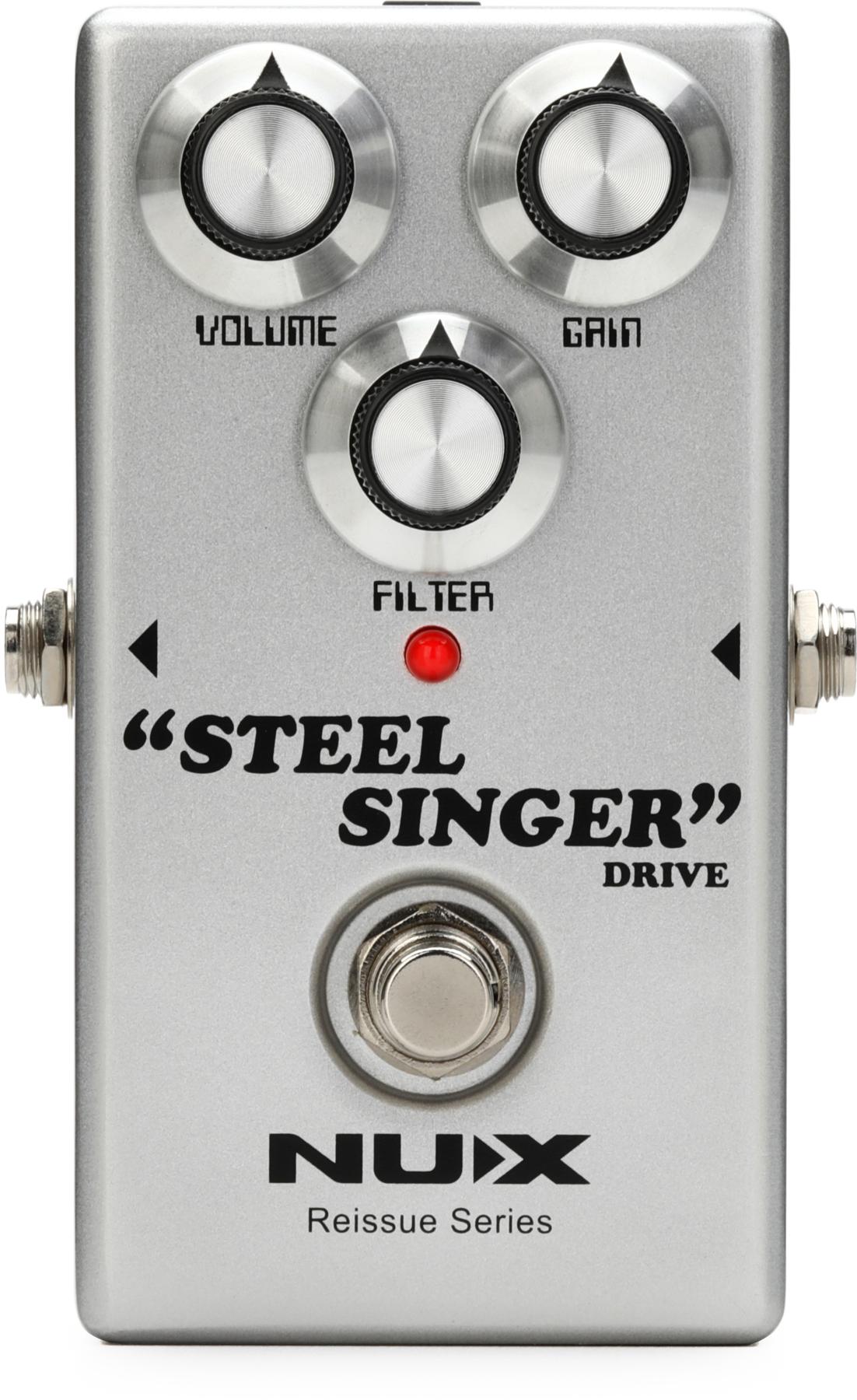RatingsPros:Vast selection of conventional-to-cosmic sounds. Thoughtful, streamlined interface design. Cons: Twitchy knobs can be hard to dial in with precision. Street: $349 Walrus Audio Mako Series R1 Reverb walrusaudio.com | Tones: Ease of Use: Build/Design: Value: |
Digital stompbox reverb has evolved by leaps and bounds in a very short time. One of the best outcomes of this evolution—and the explosion in affordable processing power that drives it—are reverbs that stretch the very definition of the effect. Walrus Audio’s Mako Series R1 is such a unit. It readily produces sounds with so many compound resonances, reflections, and modulations that the results—indeed, the pedal itself—seem to reside in a category all their own. The R1 isn’t all weird and wild. It has lovely and practical spring, plate, and hall emulations. But it’s the R1’s ability to range from those points out to stranger realms that distinguish it from much of the stompbox reverb class.
Manipulation Means
The R1 very gracefully walks the line between intuitive and intimidating. You probably won’t want to gig with it without familiarizing yourself with its idiosyncrasies, but it also forgives and rewards a naïve, intuitive approach.
When the R1’s functionality feels elusive, it’s usually attributable to the sensitivity and range in each knob. In the get-to-know-you phase, the knobs can feel twitchy and difficult to use with precision. The unique swell function, for example, comes on hard and fast. And subtle settings, to the extent that they exist, can be hard to pinpoint. Additionally, some functions—like the decay knob in spring reverb mode—have unnatural range relative to their inspirations. That’s awesome when you want to achieve the sound of a spring reverb tank on maximum dwell and hooked up to 10 Dual Showmans blasting a dirigible hangar. It’s less helpful if you’re trying to fine-tune an authentically vintage-style amp reverb tone.
The good news is that the R1 is, ultimately, quite intuitive. Utilizing the nine presets is recommended: You’ll hunt less for sounds on the fly and can switch between wildly divergent sounds if you like dramatic tone shifts. But even if you skip the presets, with practice you can manipulate the core controls to predictable ends.
The tone and tweak knobs, and associated toggle switches, control multiple parameters that change depending on the reverb mode. I needed the manual on hand to remember the secondary functions—particularly those associated with the “X” toggle position. But switching between toggle positions and adjusting the parameters is neither as onerous nor complicated as it sounds. Ultimately, I could move nimbly and naturally through those sequences.
Mad Modes, Supremely Huge Spaces
Once you make friends with the R1’s quirks, it’s fun to explore. The swell function, an envelope that operates a bit like an auto-volume pot, lends a beautiful woozy softness to each of the voices. You can only shape the duration of the swell, and the initial attacks of the note can hit with a bit more intensity than I prefer. But at high decay and mix levels, the swells become beautifully phantasmal. In hall mode, they generate swirling variations on My Bloody Valentine’s Loveless reverse-reverb tricks. In most other modes, slow, abstract melodies adorned with quivery finger vibrato become the stuff of hazy dreams.
The spring mode might not beat the most obsessively crafted digital spring emulations for authenticity in isolation. But it’s full of personality, and when mixed with other instruments (or enjoyed without perfect authenticity in mind) it generates lively spring-style voices with mechano-metallic overtones that are responsive to modulation and trebly tone settings. Hall mode is equally adaptable and versatile—ranging from cozy room-like spaces to more spacious zones that can be turned nightmarishly disorienting with generous heaps of modulation. The plate mode can generate very practical, tight, warm, studio-style settings. Or you can use the X-switch overdrive with aggressive mix, decay, and treble settings to excite and distort compound reflections. The BFR setting (you can guess at the words behind the acronym) picks up where the hall setting leaves off—effectively creating architectural spaces of scale that don’t exist on this world.
Air mode produces another voice that is more complex than it seems on the surface. It’s the closest the R1 comes to a shimmer-type reverb—adding and regenerating high-octave content that gives longer reverberations a choral quality. But where many shimmer verbs teeter toward the cheesy side of this tone recipe, the R1 often transforms that regeneration into cool feedback effects not unlike a freeze function. These textures can be thrilling to use, and sometimes behave a lot like amp feedback—particularly when you add extra regeneration via the X knob. This mode, like many on the R1, is suited to slow, lazy phrasing. But it can make a single note or chord cluster fantastically kinetic and alive.
The refract mode (labeled rfrct on the pedal) can also be driven to very resonant, near-feedback zones where individual notes and harmonics shape-shift wildly. These sounds can be used to exceptional ends at maximum decay settings, which effectively generate long-cycle loops that are a nice foundation for additional melodic and prepared guitar elements. Secondary functions from the tune and tweak knobs enable unexpected variations on these colors, and it’s fun to get lost in the huge spaces you can build.
The Verdict
Though the R1 capably spans familiar and freaky tones, the most exciting sounds are the weirdest. That is no knock on the pedal’s most basic core sounds—which are satisfying to use and can be warped into huge, mutant versions of themselves with the rangey primary and secondary controls. The Mako Series R1 reverb is a truly creative instrument that, with a little practice and exploratory spirit, can yield thrillingly and inspiringly unexpected results.
Watch our First Look demo of the Walrus Audio Mako Series R1:












![Rig Rundown: Russian Circles’ Mike Sullivan [2025]](https://www.premierguitar.com/media-library/youtube.jpg?id=62303631&width=1245&height=700&quality=70&coordinates=0%2C0%2C0%2C0)














